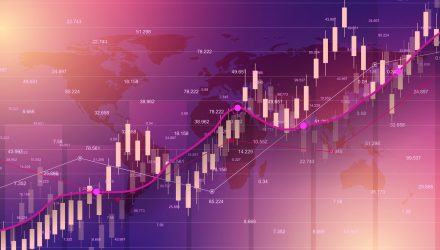Over a dozen junk bonds in Europe are returning negative yields, which is confounding the fixed income markets as fears of a global economic slowdown persist. Adding fuel to the proverbial flame is loose monetary policy agendas being pushed in Europe.
Nonetheless, it’s something that European investors are accustomed to seeing when it comes to allocating capital into safe-haven assets like government bonds and even some investment-grade corporate debt issues. However, the dichotomy between those debt issues versus high yield is that most junk bonds deal with companies that are in a tenuous position to repay their debt.
As such, high yield debt issues with negative yields can certainly be dubbed an anomaly.
“It is a perverse situation,” said Colin Purdie, chief investment officer for credit at Aviva Investors. “It is called ‘high yield,’ so to get a negative yield is pretty unusual. But it’s not completely crazy. For some investors, there is an acceptance that it’s not about absolute returns, but relative returns.”
Opportunities Within EM Debt
While 2019 has thus far seen the reemergence of emerging markets, fixed income investors must still sift through the plethora of opportunities the EM space has to offer in terms of high yield. With the central bank ready to implement rate cuts if needed, investors could be starved for high yielding assets and rather than look domestically, they could find an abundance of opportunities overseas.
Domestically, seeking opportunities within high yield might seem like an arcane idea given the serendipitous bull run came to a crashing halt in the volatility-laden fourth quarter of 2018. The risk-on sentiment that fueled three-fourths of 2018 may have gone asunder as the massive sell-offs took place to end 2018.
However, opportunities abroad in the high yield is an option that could prove more attractive that investment-grade debt.
“We own China dollar bonds,” says James Barrineau, co-head of emerging market debt at Schroders in New York. “You get single-A-rated debt at generous spreads versus the rest of single A debt out there,” he says of the price differentials between China’s investment grade bonds, Treasurys and other emerging market bonds of similar rating.
To start 2019, investors may have been hesitant by the red prices in emerging markets. However, the U.S.-China trade negotiations paved the way for a more positive outlook, which has been reflected in the number of inflows into the EM space.
Even with the trade negotiations at an impasse, when it comes to value compared to price, many of these ETFs from abroad presented a profitable opportunity that can be realized, especially if China and the U.S. eventually ameliorate their trade differences. It presented an opportunity for the investor who is seeking value in terms of locating discounted assets.
Investors can get broad-based EM exposure with the iShares Core MSCI Emerging Markets ETF (NYSEArca: IEMG). For investors seeking high-yielding income and EM exposure, they can look to the VanEck Vectors EM High Yield Bond ETF (NYSEArca: HYEM).
HYEM seeks to replicate the ICE BofAML Diversified High Yield US Emerging Markets Corporate Plus Index, which is comprised of U.S. dollar denominated bonds issued by non-sovereign emerging market issuers that have a below investment grade rating and that are issued in the major domestic and Eurobond markets.
According to Morningstar performance numbers, HYEM has yielded a 9.56 percent return thus far in 2019. The fund gives investors the necessary diversification versus relegating a portfolio’s fixed income allocation to domestic investment-grade debt.
“Everyone who sold emerging market bonds instead of buying them last year during the short-lived dollar rally made a serious mistake,” says Jan Dehn, head of research at the Ashmore Group, an $85 billion asset management firm specializing in emerging markets.
For more market news, visit ETFTrends.com.

